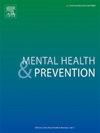泰国青少年自杀意念和企图的决定因素:混合效应建模方法
IF 2.4
Q2 Medicine
引用次数: 0
摘要
泰国面临着心理健康方面的挑战,青少年自杀率是一个令人关注的公共卫生问题。各种因素影响自杀意念和企图,突出了有针对性预防的必要性。方法分析2021年泰国全球校本学生健康调查数据,以确定与自杀意念和自杀企图相关的因素。最初,对每个自变量分别拟合混合效应logistic回归模型来估计比值比。利用显著变量和相互作用项,我们开发了几个综合模型,并用似然比检验评估了它们的改进。基于赤池信息准则(AIC)、贝叶斯信息准则(BIC)、麦克法登系数(McFadden’s R²)和偏差选择最优拟合模型。最终调整后的优势比由该模型估计。所有分析均使用R编程进行。结果性别差异显示,男性自杀相关行为的发生率低于女性。15岁及以上的青少年比他们的同龄人发生这些行为的几率要低。包括网络欺凌、悲伤和焦虑在内的心理健康问题与自杀意念和企图的增加密切相关,这强调了对面临精神痛苦的青少年进行有针对性干预的必要性。父母的依恋是一种保护因素,这表明牢固的家庭关系可能会降低自杀相关行为的风险。某些行为,如久坐不动的生活方式、饮酒和吸烟,与更高的想法和企图有关,这表明在预防工作中解决这些习惯的重要性。互动效应揭示了复杂的关系,如性别和烟草使用,以及悲伤和缺乏亲密朋友的影响。结论青少年自杀相关行为受性别、年龄、心理健康和生活方式等因素的影响。加强精神卫生支持、家庭纽带和处理危险行为是预防青少年自杀的关键。本文章由计算机程序翻译,如有差异,请以英文原文为准。
Determinants of suicidal ideation and attempts among Thai adolescents: A mixed-effects modeling approach
Introduction
Thailand faces mental health challenges, with adolescent suicide rates being a public health concern. Various factors influence suicide ideation and attempts, highlighting the need for targeted prevention.
Methods
We analyzed data from the 2021 Thailand Global School-based Student Health Survey to identify factors associated with suicidal ideation and suicide attempts. Initially, mixed-effects logistic regression models were fitted separately for each independent variable to estimate odds ratios. Using significant variables and interaction terms, we developed several comprehensive models and evaluated their improvement with the Likelihood Ratio Test. The best-fitting model was selected based on the Akaike Information Criterion (AIC), Bayesian Information Criterion (BIC), McFadden’s R², and deviance. Final adjusted odds ratios were estimated from this model. All analyses were performed using R programming.
Results
Gender differences showed that males had lower odds of suicide-related behaviors than females. Adolescents aged 15 and older had lower odds of these behaviors than their younger peers. Mental health issues, including cyberbullying, sadness, and anxiety, were strongly associated with increased suicide ideation and attempts, emphasizing the need for targeted interventions for adolescents facing mental distress. Parental attachment acted as a protective factor, suggesting that strong family bonds may reduce the risk of suicide-related behaviors. Certain behaviors, such as a sedentary lifestyle, alcohol consumption, and tobacco use, were linked to higher odds of ideation and attempts, pointing to the importance of addressing these habits in prevention efforts. Interaction effects revealed complex relationships, such as gender and tobacco use, and the influence of sadness and lack of close friends.
Conclusion
Suicide-related behaviors among adolescents reflect the influence of gender, age, mental health, and lifestyle factors. Strengthening mental health support, family bonds, and addressing risky behaviors are key to preventing adolescent suicide.
求助全文
通过发布文献求助,成功后即可免费获取论文全文。
去求助
来源期刊

Mental Health and Prevention
Medicine-Psychiatry and Mental Health
CiteScore
2.10
自引率
0.00%
发文量
22
审稿时长
24 days
 求助内容:
求助内容: 应助结果提醒方式:
应助结果提醒方式:


